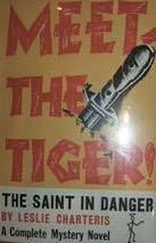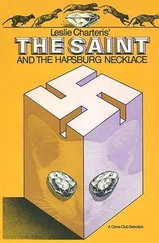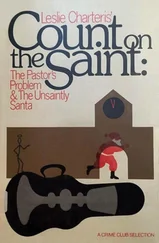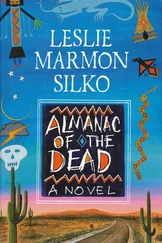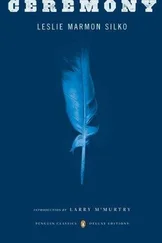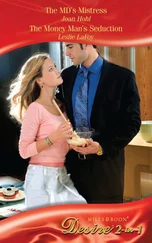What had lasting impact on me was that the old folks told their stories in their own words, in the Laguna language, and that together they stood the test in a high court of an alien culture. Maybe this is where I got the notion that if I could tell the story clearly enough then all that was taken, including the land, might be returned.
When I was a child, the Bureau of Indian Affairs day school at Laguna only had kindergarten through the fourth grade. For the fifth grade, we Laguna children had to leave our families to attend Indian boarding schools, or start riding the bus to school for hours every day.
I started writing when I was in the fifth grade because the transfer to Manzano Day School in Albuquerque was so difficult. The Bureau of Indian Affairs teachers had not bothered to teach us the times tables. I was mortified at how far behind I was at my new school.
The fifth grade teacher was Mrs. Cooper who came from England as a war bride. She was very patient and understanding about my deficiencies in arithmetic. Soon after school began, she assigned our class to take the week’s spelling list and use each of the words on the list at least once in a story we had to make up. I can still remember how delighted I was with the assignment. I loved to make up stories to tell my younger sisters and cousins.
The story came to me effortlessly, and in no time I was finished. But when I glanced around the classroom I saw the other students had difficulty making up a story. Here was something I could do that the others could not do so easily.
All my life at Laguna I was surrounded by people who loved to tell stories because it was through the spoken word and human memory that for thousands of years the Pueblo people had recorded and maintained their entire culture. The stories I loved to hear were part of my early training; from these early years of listening my imagination raced off to make up my own stories. Making up stories was second nature to me.
I made an important discovery too: while I was writing the story, I was no longer in the classroom, I was no longer the girl in fifth grade who hadn’t heard of the times tables. I was transported to the place the story was located; I wasn’t a character in the story, but I knew the direction the story was headed and I followed along and wrote down what I saw happening. I loved it and I still love it, even as I type this sentence. At Laguna the notion of “a story” covers the widest possible range: historical accounts, village gossip, sacred migration stories, hummah-hah stories that included Coyote and the other animals and supernatural beings, deer hunting stories, even car wreck stories, were all included in the oral narrative tradition. Stories are valuable repositories for details and information of use to future generations; details and information are easier to remember when there is a story associated with them. Stories even served as maps because a person who was lost in the mountains in a snowstorm might see an odd rock formation and remember a story that described the strange rock formation in detail including its location.
My great grandma A’mooh, Aunt Susie and Aunt Alice, the women who spent the most time answering my questions and telling me stories, were also women who pored over books on their kitchen tables after their families were fed. They were proud to be women of the book as well as women of the spoken word because they had obtained their book knowledge the hardest, loneliest way: in long years of exile under overcast skies at the Indian boarding school in Carlisle, Pennsylvania.
To these women, books were precious, and because of their love of books I grew up surrounded by books. They placed the highest possible value on education because the Pueblo people have always believed that knowledge from all sources, including books, is necessary for survival.
From these women, my father learned to love books. He belonged to book clubs and I remember the big deal over the publication of the unexpurgated edition of Lady Chatterley’s Lover and Tropic of Cancer , both of which he got.
He was always telling me that I should be a writer because writers can live anywhere they want and do their work. He had a vivid childlike imagination. He must have talked to me a great deal about writing in the years before I went to school. My father’s passion and true calling was photography but he was a fine storyteller and writer himself, and always had a story to go with each photograph he made.
I will always remember the day two white tourists visited our school and asked each of us children what we wanted to be when we grew up. My turn came and I told them I wanted to be a “playwright.” I was in the second grade. I never forgot this because the tourists reacted with such disbelief, but I knew a playwright made up stories.
Because I was of mixed ancestry, the older people in the community looked out for me; they tried to teach me things I might not learn at home so I wouldn’t blunder into sacred areas in and around Laguna village. Rarely, it was with a scolding, but most often I was taught with kindness.
Back then everyone watched out for other people’s children, and adults were expected to mind other people’s children and send them home if they saw them in danger.
Grandma Lillie, my father’s mother, was born in Los Lunas, south of Albuquerque; she was a mix of Mexican, German and English and one quarter Texas Indian — she wasn’t sure which tribe. Great Grandpa Zachary Stagner, Grandma Lillie’s father, ran away from his Texas family when he was fourteen, and had no contact with them again. Our cousin Joanne after much research learned that Great Grandpa Stagner’s mother was a Texas Indian named Rhoda Touchstone who died in Sweetwater, Texas.
I used to wonder why he ran away from home at fourteen. Was it because his father, Stagner the German, administered terrible whippings? Someone on Grandma Lillie’s side of the family had begun the practice of whipping young children. The Laguna Pueblo people, who never hit their children, were horrified at the terrible whippings my father gave my sisters and me when we were small.
Grandma Lillie was a beautiful young woman, but she must not have felt or realized her beauty. I remember all the black and white Kodak snapshots in the Hopi basket with the grasshopper man pattern. Many of the photographs showed Grandma Lillie, when she was young, with Grandpa Hank but also with her younger sisters. There were snapshots of Grandpa Hank often posed beside fast cars. He wore stylish suits and was very handsome.
Sometime in the late 1950s (was it one of the times she thought Grandpa Hank was having an affair?) Grandma Lillie took the Hopi basket full of snapshots and a pair of sharp scissors and carefully cut out her face from every photograph. If she appeared in snapshots with other people, the faces of the others were intact; only her face was neatly excised. The faceless images were very strange; without the face, the upright figure with the remaining top of the head and hair looked like a corpse.
Recently I learned something more about Grandma Lillie’s mother’s people, our Los Lunas relatives and their connection with the whipping of young children. All these years I thought I knew the whole story but I was wrong.
Long before I knew anything about the Indian slave trade in New Mexico, I’d heard Grandma Lillie’s stories about old Juana, the Navajo captive who lived with them and cared for them when they were children. One Memorial Day when I was twelve or thirteen, Grandma Lillie asked me to go with her to take flowers to old Juana’s grave. She told me Juana died around 1920 when she was more than one hundred years old. We filled clean coffee cans with water; then we cut some roses and lilacs from Grandma A’mooh’s yard because those were the only fresh flowers to be found.
Читать дальше

